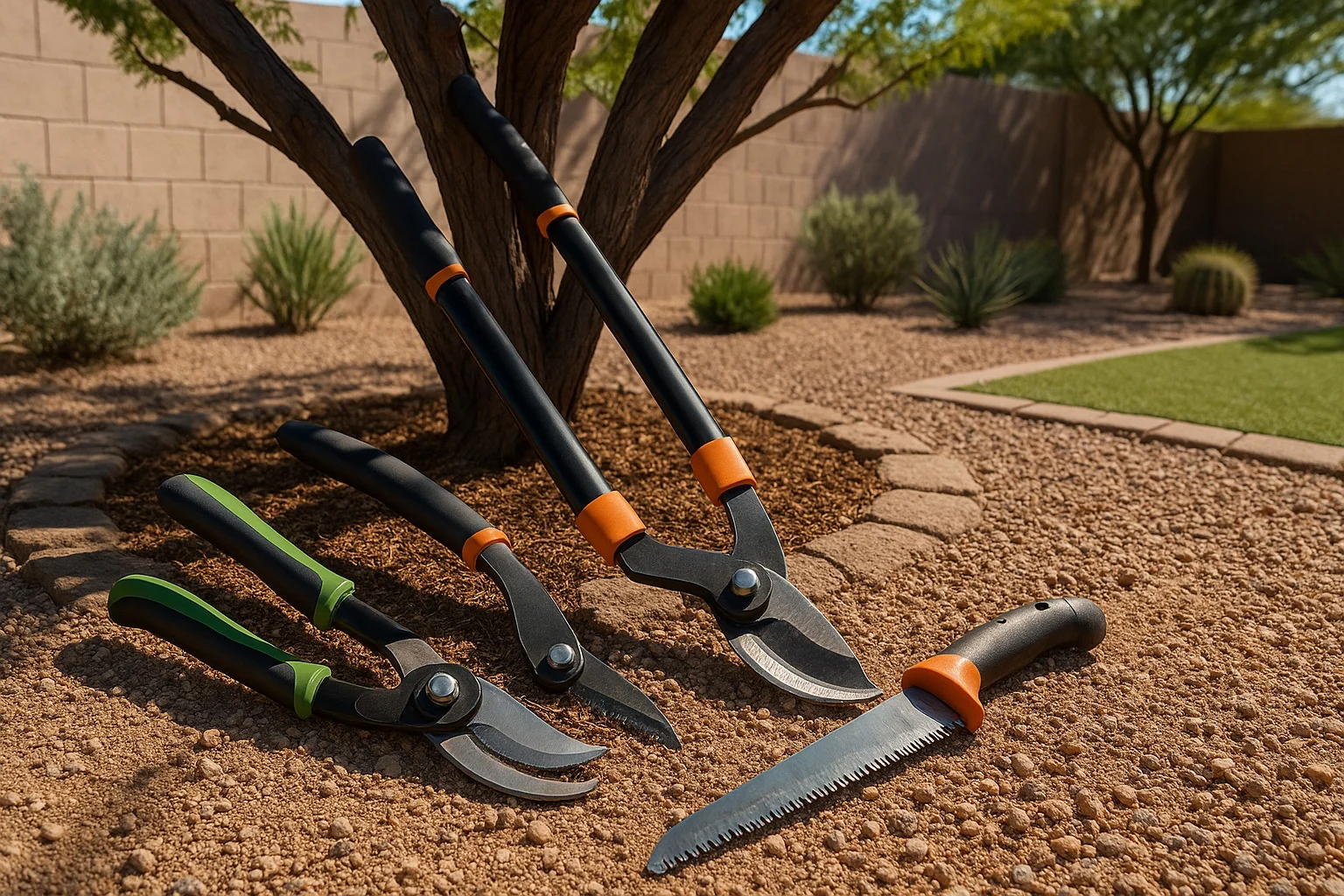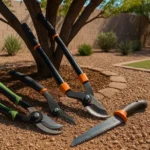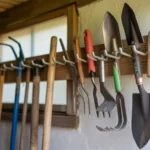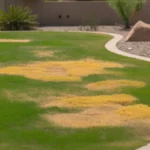As a Gilbert homeowner, you know that proper tree pruning is essential for maintaining the health and beauty of your desert landscape. But before you break out the pruning shears, there are a few key things to consider to ensure you’re giving your trees the best possible care. Let’s dive into what you need to know to prep for a successful desert tree pruning season! 🌳✂️

Know Your Timing 🗓️
In Gilbert, the best time to prune most desert trees is during their dormant period in late winter or early spring, before new growth begins. This allows the tree to direct its energy into healing the pruning cuts and producing healthy new foliage. Avoid pruning in the heat of summer or during periods of drought stress, as this can put unnecessary strain on the tree.
However, there are a few exceptions to this general rule. For example, palo verdes and mesquites are best pruned in the summer after their spring flowering period. And if you have a tree with dead, damaged, or diseased branches, it’s okay to prune those selectively any time of year to prevent further issues.
Gather the Right Tools 🛠️
Having the proper pruning tools on hand will make your job much easier and ensure cleaner, healthier cuts for your trees. Invest in a good pair of bypass pruners for smaller branches, lopping shears for medium branches, and a pruning saw for larger limbs. Make sure your tools are sharp and clean to prevent crushing or tearing the bark and reduce the risk of disease transmission.
You’ll also want to have some safety gear on hand, especially if you’ll be working on taller trees. A sturdy ladder, gloves, eye protection, and a hard hat can help prevent injuries from falling branches or debris. If you’re not comfortable working at heights or with larger trees, consider hiring a professional arborist to handle the job safely.
Plan Your Pruning Strategy 📝
Before making any cuts, take a step back and assess your tree’s overall shape and structure. Identify any crossing, rubbing, or competing branches that should be removed to improve air circulation and light penetration. Look for dead, damaged, or diseased wood that needs to be pruned out. And consider your tree’s natural growth habit and how you want to shape it for aesthetics and functionality.
As a general rule, aim to remove no more than 25% of the tree’s live foliage in a single pruning session. This will help prevent shock and encourage healthy regrowth. Make your cuts just outside the branch collar (the swollen area where the branch meets the trunk) to promote proper healing. And avoid leaving stubs or flush cuts, which can invite decay and disease.
Clean Up and Monitor 🧹👀
After you’ve finished pruning, take the time to clean up any fallen leaves, twigs, or branches from your yard. This will not only keep your landscape looking tidy but also reduce the risk of pest and disease issues. You can add the smaller prunings to your compost pile or use them as mulch around your trees and plants.
In the weeks and months following your pruning session, keep an eye on your trees to monitor their recovery and growth. Water them deeply and regularly during dry spells, and consider applying a slow-release fertilizer to give them a nutrient boost. With proper care and attention, your Gilbert desert trees will thrive and provide beauty and shade for years to come.
More Gilbert Tree Care Tips 🌿
Want to learn more about caring for the trees in your Gilbert yard? Check out these helpful resources:
- Best Desert Trees for Small Yards in Gilbert
- Tidy Up! Pruning for Gilbert’s Summer Growth
- When to Cut Back Lantana in Gilbert
- Weekend Projects for Desert Tree Pruning
With a little know-how and some elbow grease, you can keep your Gilbert landscape looking its best all year round. Happy pruning! 🌞






